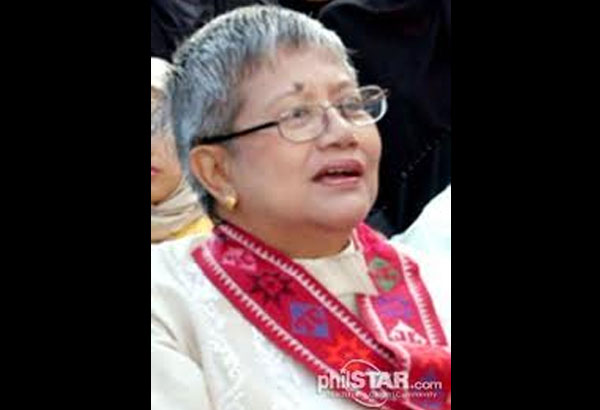COTABATO CITY, Philippines - Stakeholders to the Mindanao peace process are optimistic the reactivation of the Bangsamoro Coordination Forum (BCF) through the efforts of the Organization of Islamic Cooperation (OIC) will bind together two rival fronts bickering over each other's different peace blueprints for the decades-old Moro rebellion.
Presidential Adviser on the Peace Process Teresita Quintos-Deles said Wednesday that the revival of the BCF, based on a consensus reached by the Moro Islamic Liberation Front (MILF), the Moro National Liberation Front (MNLF) and the OIC during a meeting last week in Jeddah, Saudi Arabia, complements Malacañang’s peace efforts with southern Moro communities.
The BCF was first established by the OIC in 2010, to resolve the ideological disparities of the two fronts, but failed to take off, overtaken by events and security issues that saddled the Moro dominated areas in the south.
The OIC, a bloc of 57 Muslim countries, including the petroleum-exporting states in the Middle East and North Africa, helped broker the Sept. 2, 1996 final peace pact between the government and the MNLF. It is also involved in the on-going overture between the MILF and Malacañang.
The OIC has been trying since 2006 to unite the MILF and the MNLF for both groups to agree to a common Mindanao peace roadmap. Leaders of both groups agreed to revive the BCF during their meeting on June 14 at the OIC’s headquarters in Jeddah.
“We welcome that news. The BCF must provide the two fronts the opportunity to pursue together a just, lasting and `inclusive’ peace in Mindanao. This is a much-awaited development,†Deles said in a text message.
Deles said the creation of the BCF complements the "inclusivity context" of the Comprehensive Agreement on Bangsamoro, signed in Malacañang on March 27, 2014 by GPH chief negotiator Miriam Coronel-Ferrer, and her MILF counterpart, Muhaquer Iqbal.
Oblate Missionary Eliseo Mercado, Jr., director of the vaunted Institute for Autonomy and Governance, said he felt elated with the "resurrection" of the BCF as a result of the OIC’s latest attempt to bring together the MNLF and the MILF into one venue, where both sides can discuss and reconcile each other's different perspectives on how to resolve the Moro problem that has been hounding the country's south since the late 1960s.
“We are hoping that the reorganized BCF, with the MILF and the MNLF both at its forefront, will exist as a working regular peace and solidarity forum for the two groups, even without the OIC’s presence,†said Mercado, who regularly convenes some 40 peace advocacy groups for periodic roundtable dialogues on the Mindanao peace process.
Gov. Mujiv Hataman of the Autonomous Region in Muslim Mindanao and Maguindanao’s chief executive, Gov. Esmael Mangudadatu, had both expressed support for the BCF via separate emailed official statements.
Mangudadatu said he is even willing to invite representatives of the BCF to the inter-agency Maguindanao peace and order council, which oversees the peaceful resolution of security issues in the 36 towns in the province, a known bastion of the MILF.
"There must be continuing peace activities between government agencies and Moro groups in Maguindanao to sustain the goodwill between the GPH and the MILF," he said.
The governor, during the PPOC’s meeting in Buluan town on Monday, lauded the commanders of the Army’s 6thInfantry Division, the 601st, 602nd and 603rd Brigades, for their continuing engagements with MILF leaders through sports activities, joint resolution of family feuds, and in the planning and implementation of community projects meant to improve the productivity of Moro peasants.
“And now we have added the BCF to the PPOC’s 'book of friends and partners' in furthering peace and sustainable development in Maguindanao,†Mangudadatu said.
The MILF’s chief negotiator, Mohagher Iqbal, had confirmed that, while in Jeddah, they signed, along with the MNLF, and OIC’s secretary-general, Iyad Ameen Madani, a joint communiqué stating the reactivation of the BCF.
Madani has called on the MILF and the MNLF to build closer working relations with each other after the signing of the trilateral statement, according to Iqbal.
It was the MNLF that first started the Moro rebellion in Mindanao in the early 1970s, then a solitary struggle for self-rule by Mindanao's Muslim groups.
The ideological differences between MNLF founders Nur Misuari, who is from Sulu, and the Egyptian-trained cleric, Salamat Hashim, an ethnic Maguindanaon, led to the birth of the MILF in 1981, with the latter leading the breakaway group, which is more religious in character.
The MNLF has been- since after signing a final peace accord with government on Sept. 2, 1996- seeking the enhancement of the ARMM, the expansion of its area and the involvement of members in regional governance.
The MILF, which has an ongoing agreement with Malacañang, wants the autonomous region replaced with an entirely new, more politically and administratively empowered Bangsamoro entity.


